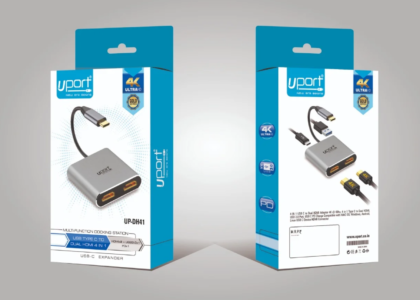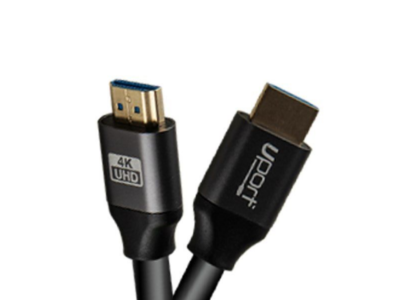In the world of digital connectivity, the need to convert different types of connections is quite common. Whether for business presentations, gaming, or multimedia purposes, connecting various devices can sometimes require specific adapters and converters. One question that often arises is whether it’s possible to convert HDMI to USB 3.0. In this comprehensive guide, we’ll explore this topic, providing detailed insights and solutions.
Understanding HDMI and USB 3.0
What is HDMI?
HDMI (High-Definition Multimedia Interface) is a standard interface used for transmitting high-definition video and audio signals. It’s widely used in TVs, monitors, projectors, and a variety of other multimedia devices. HDMI supports both video and audio, making it a popular choice for high-definition and ultra-high-definition content.
What is USB 3.0?
USB 3.0 is a version of the Universal Serial Bus (USB) standard, known for its high data transfer speeds. It supports data transfer rates up to 5 Gbps, which is significantly faster than its predecessor, USB 2.0. USB 3.0 ports are commonly found on computers, laptops, and various peripheral devices.
The Need for HDMI to USB 3.0 Conversion
The requirement to convert HDMI to USB 3.0 arises in several scenarios:
- Capturing Video: Content creators, gamers, and professionals often need to capture video from HDMI sources (like cameras or gaming consoles) and record it on a computer via USB.
- Video Conferencing: Connecting high-quality cameras (with HDMI output) to computers for video conferencing and streaming.
- Presentations: Integrating video feeds from HDMI sources into presentation software running on a laptop or desktop.
- Streaming: Streaming gameplay or live events from an HDMI source to online platforms using a computer.
Can You Convert HDMI to USB 3.0?
Yes, it is possible to convert HDMI to USB 3.0, but it requires specific hardware. Unlike simple cable adapters, converting HDMI to USB 3.0 involves signal processing that requires active components. Here are the primary methods to achieve this conversion:
HDMI to USB Video Capture Devices
The most common solution for converting HDMI to USB 3.0 is using a video capture device. These devices capture the video signal from an HDMI source and transfer it to a computer via USB 3.0. Here’s how they work:
- Capture Device Connection: Connect the HDMI output from the source device (e.g., camera, gaming console) to the HDMI input on the capture device.
- USB Connection: Connect the USB output from the capture device to a USB 3.0 port on your computer.
- Software: Use video capture or streaming software on your computer to record or stream the video feed.
Popular HDMI to USB 3.0 Capture Devices
- Elgato Game Capture HD60 S+: Known for its high-quality video capture, this device is popular among gamers and content creators. It supports 1080p60 capture and has a USB 3.0 interface for high-speed data transfer.
- AverMedia Live Gamer Portable 2 Plus: Another excellent choice for gamers, it offers 1080p60 capture and is easy to use with both PCs and consoles.
- Blackmagic Design UltraStudio Mini Recorder: Ideal for professional video work, this device supports high-quality video capture and has a Thunderbolt interface, which can be adapted to USB 3.0 using the appropriate converters.
Setting Up an HDMI to USB 3.0 Capture Device
- Connect HDMI Source: Connect the HDMI cable from your source device (camera, console, etc.) to the HDMI input on the capture device.
- Connect to Computer: Use a USB 3.0 cable to connect the capture device to your computer’s USB 3.0 port.
- Install Drivers: If required, install the necessary drivers for the capture device. These are usually available on the manufacturer’s website.
- Configure Software: Open your video capture or streaming software and configure it to recognize the capture device. Popular software options include OBS Studio, XSplit, and Elgato’s own Game Capture software.
- Test the Setup: Ensure everything is working correctly by testing the video feed and making any necessary adjustments to the settings.
Considerations When Choosing an HDMI to USB 3.0 Capture Device
Compatibility
Ensure that the capture device is compatible with both your source device (camera, console, etc.) and your computer. Check the supported video resolutions and formats.
Video Quality
Consider the maximum resolution and frame rate supported by the capture device. For professional use, you may need a device that supports high-definition (1080p) or even 4K video capture.
Software Support
Look for capture devices that come with user-friendly software or are compatible with popular third-party software like OBS Studio. This makes the setup process easier and ensures better performance.
Latency
Low latency is crucial, especially for live streaming and gaming. High-latency devices can cause delays, which can be problematic for real-time applications.
Price
Capture devices vary in price, from affordable options for casual use to more expensive models for professional applications. Choose a device that fits your budget and meets your requirements.
Alternative Methods
While HDMI to USB 3.0 capture devices are the most reliable and straightforward solution, there are alternative methods for specific use cases:
USB-C to HDMI Adapters (with USB 3.0 Functionality)
Some modern laptops and devices come with USB-C ports that support video output through DisplayPort Alternate Mode. You can use a USB-C to HDMI adapter to connect such devices to HDMI displays. While this doesn’t convert HDMI to USB 3.0, it’s a useful alternative for devices that support USB-C video output.
Network Streaming
For some applications, streaming video over a network might be a viable alternative. Devices like the NVIDIA Shield or software solutions like OBS can stream HDMI video to another device over a local network. This method is more complex and may require additional configuration but can eliminate the need for physical conversion.
Conclusion
Converting HDMI to USB 3.0 is indeed possible and commonly done using HDMI to USB 3.0 capture devices. These devices are essential tools for content creators, gamers, and professionals who need to capture or stream high-quality video from HDMI sources. By understanding your needs and choosing the right equipment, you can easily set up an efficient and effective HDMI to USB 3.0 conversion system.
Whether you’re capturing gameplay, recording videos, or setting up professional video streams, HDMI to USB 3.0 capture devices provide a reliable solution. Remember to consider compatibility, video quality, software support, and latency when selecting a device. With the right setup, you can seamlessly integrate HDMI video sources into your computer system, enhancing your digital connectivity and content creation capabilities.






